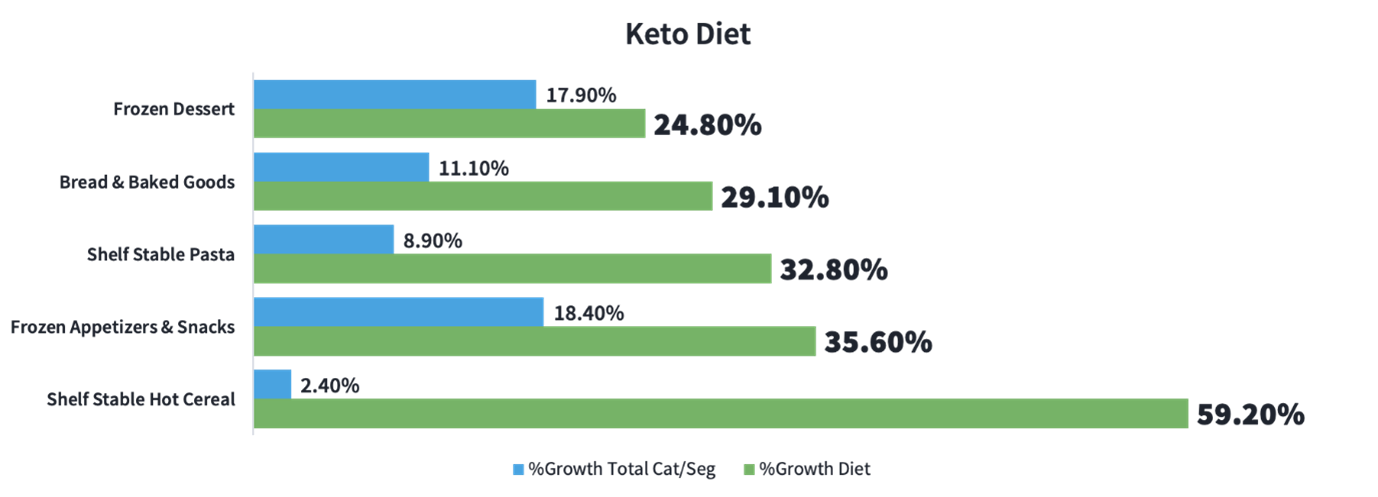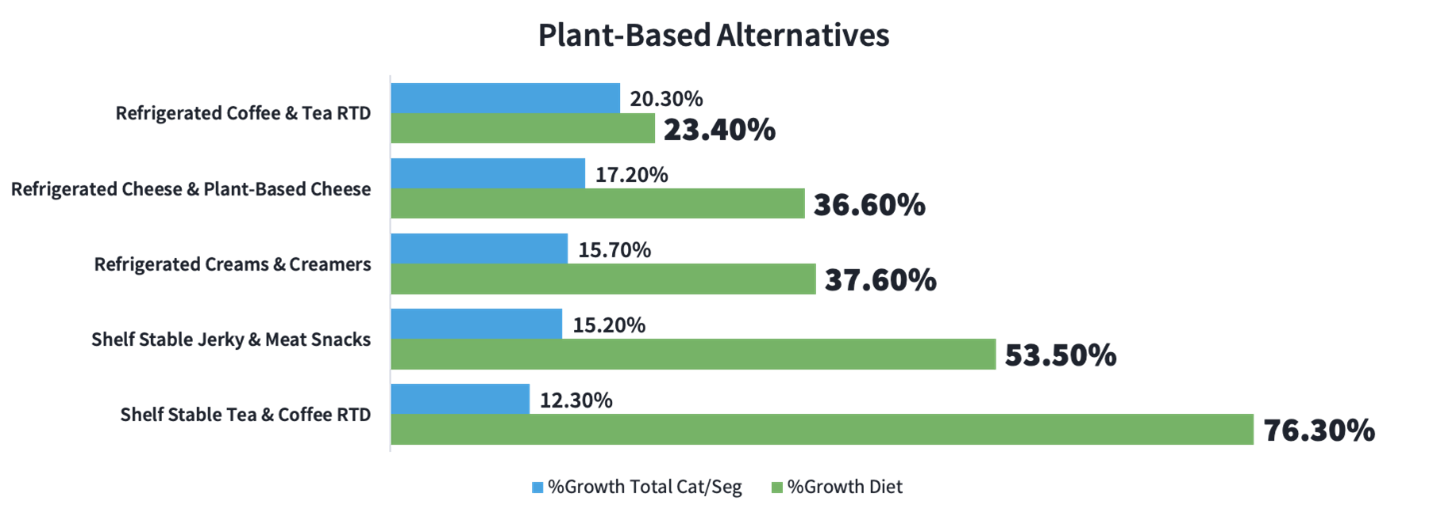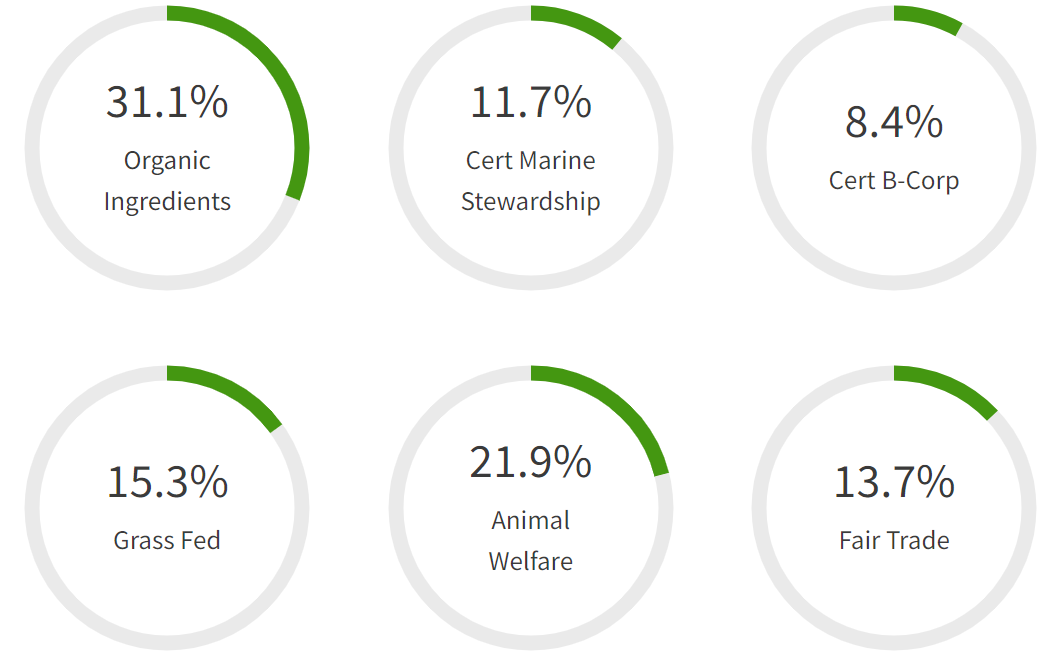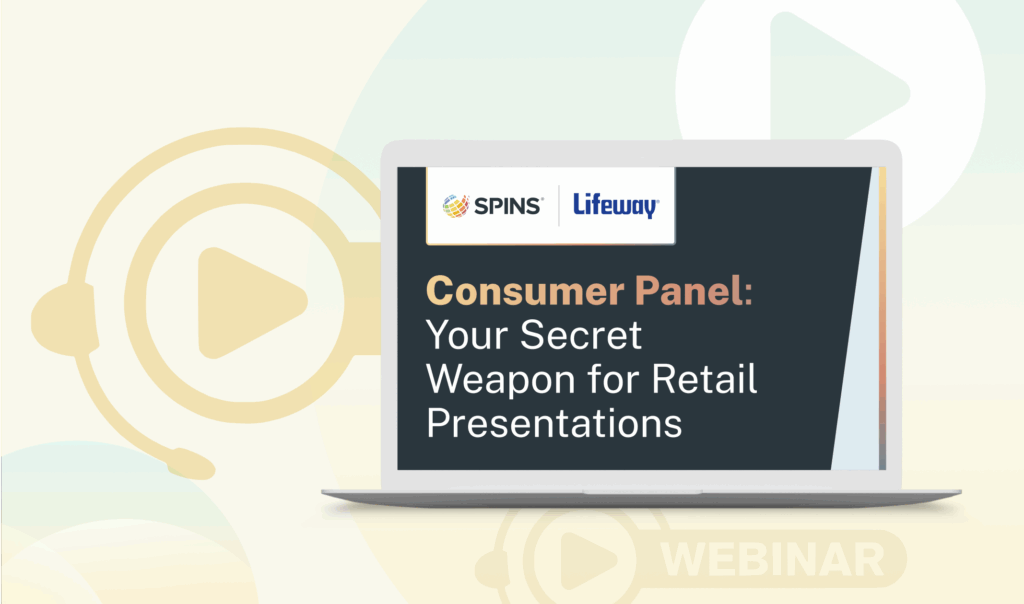Concerned Shoppers Are Taking Control
During the lockdown months, many shoppers had limited options when it came to their health routines. Some gyms and fitness classes were closed, while plenty of people didn’t feel comfortable returning to in-person workouts anyway. Between those restrictions, a desire to stay healthy (and out of the doctor’s office), and a need to avoid certain allergens, grocery shopping became one of the few instances where shoppers were in control during the COVID months, propelling continued health and wellness industry growth in 2021 and beyond.
We know how consumer habits are affecting sales and category trends are popping up as a result, but there’s still one factor to explore: growth drivers. Dietary needs and sustainability are inspiring shoppers to purchase items that align with their priorities, spurring brands to innovate and retailers to rethink their store experience.
Health and Wellness Shoppers Focus on Their Dietary Needs
During the last year, we saw keto-friendly products infiltrate pantry staples with revised recipes. Items like cereals and pastas have not historically fallen under the keto banner due to their carb-heavy makeup, but innovative brands have found new formulas to overcome that obstacles.
That’s why we’ve seen many of these items with the keto attribute grow at a much faster pace than the overall categories they belong to. For example, shelf stable hot cereal with a keto attribute grew 59.2%, while the overall category only grew 2.4%. Similarly, keto frozen appetizers and snacks grew 35.6% compared to 18.4% for the overall category.

What is keto?
The keto diet aims to force your body to rely on ketone bodies, which are produced by the liver, instead of glucose, which primarily comes from carbohydrate sources. When looking at your dinner plate, the majority of your calories come from fat, followed by protein, and then by a much smaller portion of carbohydrates.
Plant-Based Innovation in Every Department
Plant-based alternatives enjoyed similar success, though the growth has been even stronger in some categories. Products with the plant-based attribute have shown considerable growth on shelves and in coolers over the last year. Whether the move toward plant-based is based on personal health, climate concerns, new work-from-home diets, or a combination of factors, the trend is clear. Look at plant-based ready-to-drink shelf stable tea and coffee, which grew 76.3% versus the overall category rate of 12.3%. Other plant-based items like jerky and meat snacks and refrigerated cheeses repeated that strong growth.

Sustainability Intersects with Several Buyer Priorities
Sustainability is more than a buzzword. From packaging and product sourcing to pet food, sustainable production methods influence which products end up in shopping carts. Today’s shoppers realize that the way a product goes from the farm (or factory) to shelves to their table affects our planet. It’s also another way that shoppers could take some control during a year where it felt like they had very little. Products with attributes aligning to sustainability fared quite well during the lockdown:
- Products touting animal welfare grew 21.9%
- Grass-fed products rose 15.3%
- Fair Trade items grew 13.7%
Related: New Data: Sustainable Shoppers Want Organic Products and Zero-Waste Packaging

That ability to give consumers power to improve their own health and the environment showed many meat and dairy manufacturers the power of messaging their responsible business practices. We see these practices play out today:
- Small and local farms and regional dairies are differentiating themselves by highlighting supply chain transparency that bigger brands can’t claim.
- Meat and plant blended products create a two-pronged approach to improved health and nutrition for shoppers alongside sustainable products that don’t harm the planet
- Regenerative agriculture is a method by which Farms that seek to reverse climate change rely on production methods that rebuild organic soil matter and restore degraded soil biodiversity. The goal is to remove carbon dioxide and lead to a better water cycle. Regenerative agriculture has become a strong selling point for shoppers who don’t just want to reduce harm with their purchases but want to reverse damage to the planet.
Uncover Your Growth Drivers with SPINS
From dietary needs to sustainability concerns, shoppers are mindful about what they put in their baskets. SPINS can help you look beyond the topline sales data and dig into the seeker and avoider attributes that explain the behavior you’re seeing in your store.





